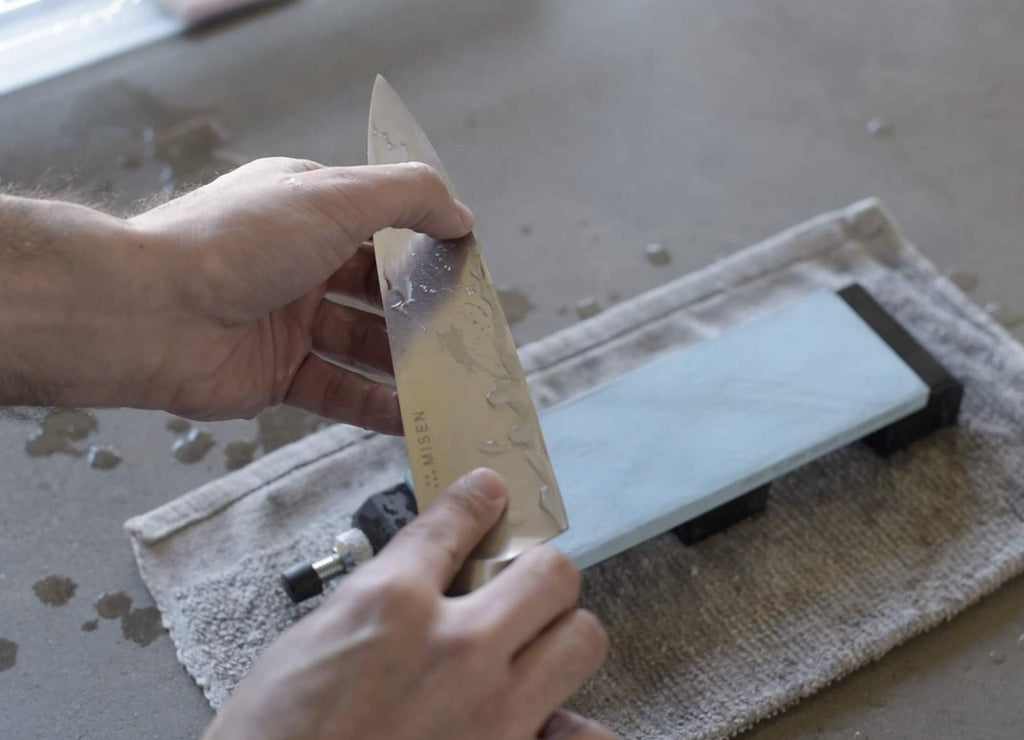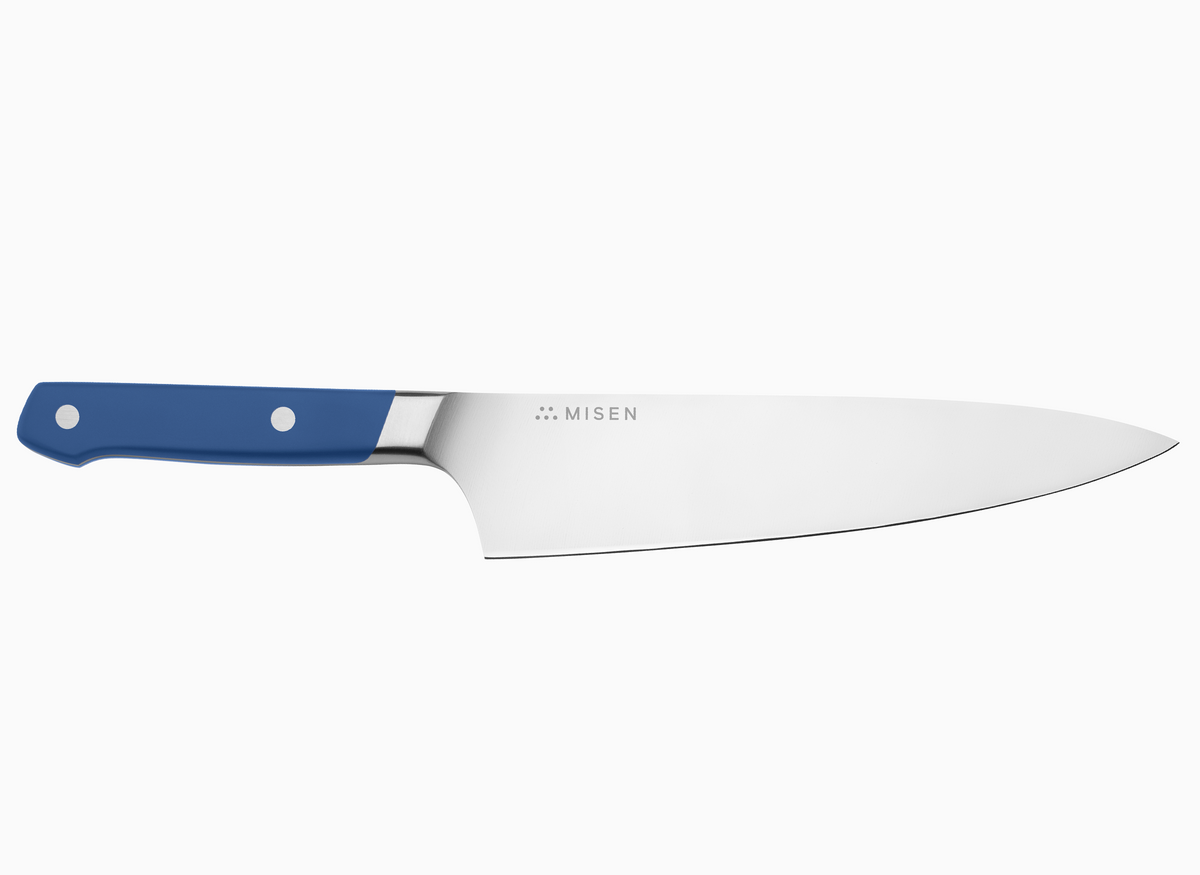Find the Best Steak Knives to Sharpen Your Dining Experience
 High-quality steak knives cut through meat like butter.
High-quality steak knives cut through meat like butter.
- Steak knives can come in many varieties, but the most important components are the quality of the blade and the feel of the handle.
- Properly maintaining your steak knives can keep them sharp and in good shape for a long time.
- The size of your household and the frequency of steak knife use may determine how you purchase this cutlery.
Steak knives are a dining room essential — any attempt to cut a piece of meat with a butter knife would drive that point home. They belong in the pantheon of “Very Important Knives” but differ from kitchen knives in one crucial way: They're intended for the table rather than the cutting board. They can still hang out with your other cutlery, but they have different jobs.
Although a steak knife's primary job is to cut cooked meat, it can be used for any other plate-level cutting that needs to be done at the table.
Classic steak knives were adopted after centuries of using only dull table knives (like butter knives). Steak knives became popular in the 1950s. These days, every home chef will need steak knives. Finding and using the best steak knives is a rewarding task because it makes the dining experience that much more enjoyable.
Follow along as we delve into what makes a steak knife great — and what to look for.
The Steak Knife Blade
 A steak knife’s edge can be serrated or straight.
A steak knife’s edge can be serrated or straight.
As with all knives, the sharp blade is the business end of a steak knife. A steak knife generally has a straight blade and a thinner spine than many kitchen knives, since it's not meant for chopping like a chef knife is. Instead, it's intended to slice firmer foods (like steak).
Steak knives can feature serrations or a straight edge — the edge you choose depends on personal preference. Serrations can make a knife act more like a saw, which means they don't necessarily need to be sharpened as often, whereas straight-edge knives will need to be consistently sharpened to do their best work.
For a sturdy steak knife, look for a full tang. This means the metal should extend all the way through the handle, which should be riveted to the metal. A full tang blade allows for much greater resistance to pressure and, in general, a more robust cutting tool.
Different companies use different types of metal in their knives. Whether you use stainless steel, high carbon stainless steel, German, Japanese, or whatever steel a company may talk up to sell you a steak knife set, the steel must be high-quality.
To evaluate the quality, ask yourself whether the knife cuts well, maintains a sharp edge, and is resistant to rust or staining. If the answer is yes to all of the above, then the knife is good to go and can potentially take its place among the best steak knives.
A note on carbon: steel, by definition, contains carbon. Technically speaking, steel that contains more than 0.3% carbon is high-carbon steel. Carbon makes steel harder but also more brittle and prone to rusting. You'll often hear companies use the term “high-carbon steel,” and now you’re in the know.
The Steak Knife Handle
 The handle of a steak knife should be easy to grip.
The handle of a steak knife should be easy to grip.
A steakhouse steak knife conjures up the image of a hefty wooden handle and a knife that weighs a ton. This isn't entirely necessary: It's mostly for show. In fact, a premium steak knife doesn't need to be heavy. The knife handle is simply there to allow you to grip the knife to get the job done.
There are various types of handles: wooden, plastic, and pakkawood handles (a type of treated wood that's waterproof). If the handle is attached to a full-tang knife via rivets, or small, metal bolts, the wooden or plastic part of the handle is known as “scales.” You can still call it a handle, but knowing terminology is fun.
The scales of a steak knife should fit ergonomically in your hand. Essentially, you want the knife to feel like an extension of your hand so you don't have to grip it too hard.
Maintaining Your Steak Knives
 Sharpening knives is one of the best ways to take care of them.
Sharpening knives is one of the best ways to take care of them.
Maintaining high-quality steak knives follows the same rules as maintaining any quality knife. By treating your knives with care, they'll last you a very long time and will do their job as intended. There are two simple ways to maintain your knives: proper washing and sharpening.
Washing
First, the knife should always be washed by hand. Use gentle dish soap and a sponge to wash the knife as soon as you've finished using it. Dry it immediately, and store it away from moisture. Properly hand-washing and drying your knives is one of the best ways to keep them in prime condition.
Putting any stainless steel blades in the dishwasher can lead to long-term knife damage since steel of any kind doesn't like overexposure to water. If a company tells you their knives are dishwasher safe, beware: No good knife is guaranteed safety in the dishwasher.
This is especially true if the knife has a wooden handle, since exposure to water can crack and warp wood. Even if the handle is made of waterproof pakkawood, the blade can be damaged by too much water.
Sharpening
Sharpening the knives is crucial to their longevity and effectiveness. If you're new to sharpening, know it's a good skill and that home-sharpening is an option.
Do note sharpening a serrated knife requires a different technique than sharpening a straight-edged knife. If you'd like to learn how to sharpen your knives, you don’t need to go straight for the knife sharpener set at a store, waterstones of varying degrees of coarseness can get your knives amazingly sharp. This includes whetstones of varying degrees of coarseness.
Whetstones are measured by their level of coarseness. Low numbers of coarseness indicate a very coarse stone intended to repair damaged or chipped knives, while higher numbers represent stones meant for finishing a knife to a fine edge.
If you don't have the time or inclination to sharpen your knives, you can have them professionally sharpened. Misen offers Mail-In Knife Sharpening starting at $11/knife.
Stake Out the Best Steak Knives
 A good steak knife can be one of your best friends at the table.
A good steak knife can be one of your best friends at the table.
Wherever you shop — be it at a small online store, Amazon, or an in-person store — know that you don't have to spend a fortune to get good steak knives that will last years. Lots of companies like Wusthof, Laguiole, J.A. Henckels International, Chicago Cutlery, and Victorinox sell steak knives of varying price levels and quality.
When purchasing, consider your budget and frequency of use. Steak knives can see lots of action, and having quality ones at your disposal will make cutting your dinner foods easier. The knives don't need to be extraordinarily expensive, but overly cheap ones will feel just that.
If you're looking for steak knives, also consider how many people regularly eat dinner at your house. A family that regularly hosts dinner parties, for example, would need a larger set of steak knives than one that doesn't.
Whether you’re cutting meat, vegetables, or even butter, a good steak knife is impossible to replace. If you upgrade your knife, you upgrade your life. That’s how we like to think about it.








